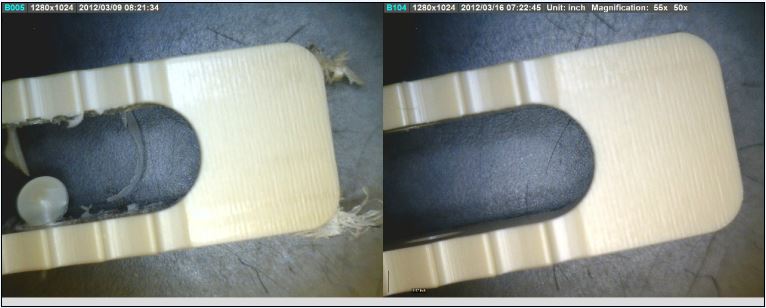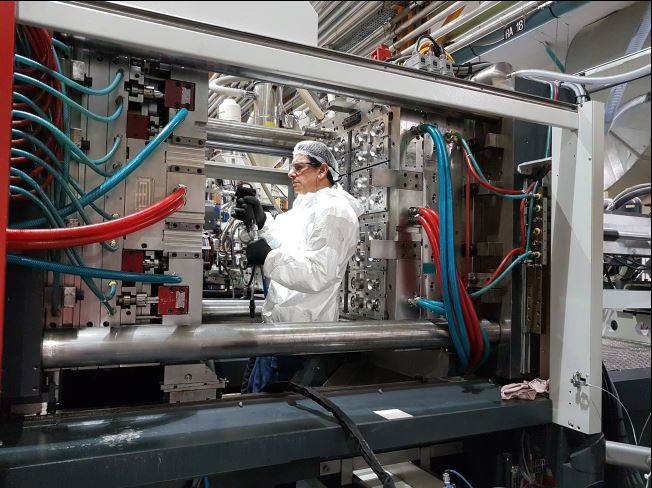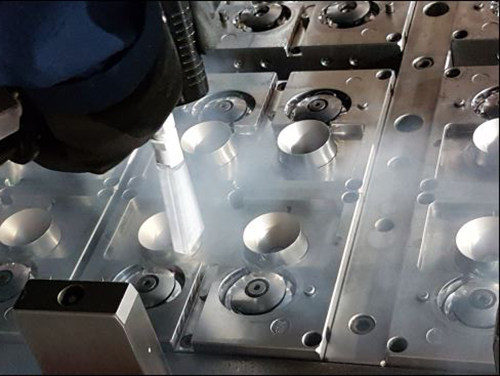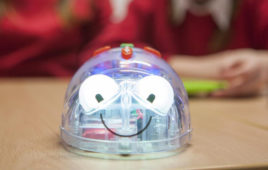When it comes to medical device manufacturing, precision can be an understatement. Paying attention to the intricacies in molding or machining surgical equipment, grinding needles and tubes, or coating stents are all critical, as the end product must be pristine and uncompromised. Cleaning and maintaining equipment and the manufactured part are also critical steps to a successful product.
The finishing process must ensure that the parts are delivered without flaws or excess material and are ready for use.
While great medical parts begin with a good design, success in bringing that part to the market place is dependent on how well that part is manufactured. Whether that process is molding or machining, the mold and the deburring process must be as efficient as possible.
Medical device manufacturers face many challenges when it comes to cleaning and maintaining equipment and deburring or deflashing products. Many of the innovative parts and products produced by manufacturers are small and the equipment is finely detailed and expensive. Residue build-up in the extremely small mold cavities and on the expensive tooling during the production of the high tolerance medical device parts can impact the quality of the end product. This build-up results in parts not meeting tolerances, which elevates scrap rates, and could eventually clog the mold cavities and impede the performance of the tooling. The residues can also prevent the imprinting of small, yet critical details, such as measuring scales on syringes.
The design of certain medical parts may make it difficult for the manufacturer to clean and finish the part. After design and production, the part must be cleaned, or if it was machined, it may need to be deburred. With traditional cleaning and deburring methods, a production team may have difficulty completing the task. With complex parts, grit entrapment and cross contamination are issues that commonly occur during this process.

Before and after of a deburred medical part using dry ice cleaning (Credit: Cold Jet)
Because of the small size of mold cavities and intricate designs of the parts the cleaning process is typically labor intensive. The high tolerances on the parts also require stringent quality controls. This means the cleaning process has to equal the manufacturing process in terms of quality and diligence. To clean and maintain the equipment and parts, manufacturers have tried a variety of cleaning and finishing methods.
Manufacturers have experimented with several cleaning processes for their complex needs. When it comes to product finishing, or deburring and deflashing, manufactures often implement manual processes or processes that involve abrasive cleaning substances. For instance, many surgical instrument manufacturers manually scrape the part or use micro sandblasting to remove burrs and excess material. These processes are slow, time consuming, create secondary waste (which may need to be treated as toxic materials), and can damage parts.
The Solution
The dry ice cleaning process eliminates these issues by easily and quickly cleaning contaminates or extra material from the part and the manufacturing tools.
The precision cleaning method uses recycled CO2 in the form of dry ice pellets or pieces accelerated at supersonic speeds to delicately remove residue from parts and equipment. The combination of the kinetic and thermal gradient effects breaks the bond between the residue and the surface. When the dry ice hits the surface it sublimates, or returns to its gaseous state, eliminating any secondary waste.
Dry ice cleaning has proven to be faster, safer, and more effective at removing materials used during the manufacturing process. It allows for freedom of design without worrying about these cleaning or deburring issues plaguing the production of the part.
The process is helping medical device manufacturers to improve quality, increase production and reduce costs.

In-machine mold cleaning using dry ice (Credit: Cold Jet)
Improving Quality
Cleaning the manufacturing equipment and products is critical when producing medical device parts. Unwanted material can build-up in the tiny and detailed molds, and must be removed. When grinding needles or laser-etching holes and slots, burrs can form, which require deburring. Any clogging reduces airflow and can damage the parts, which then must be scrapped.
Other cleaning methods, such as sandblasting, chemical solvents, and manual scraping, chipping, drilling, and scrubbing with brushes are time consuming as cleaning a single mold or part can require up to an hour or more, including the disassembly and reassembly of equipment. In addition, these traditional cleaning methods can damage the equipment and are not completely reliable.
Deburring with dry ice also will not change the dimension of the original design. Dry ice is non-abrasive, and like other methods, the production team will not run the risk of altering the dimensions of the part. The method can also focus on a very specific area without touching the rest of the part.
Improving Productivity
Medical device manufacturers are discovering that cleaning with dry ice can reduce cleaning time by as much as 75 percent. For example, one person using a precision dry ice blasting system at a manifold manufacturing plant was able to clean a mold in 15 minutes versus an hour with a previous method. The reduction in time can save manufacturers thousands of dollars in time and labor costs.
Cleaning molds and equipment is simplified with dry ice blast cleaning as the equipment can be cleaned in place, eliminating cooling, disassembly, reassembly, and reheating from the cleaning process, and reducing the risk of damaging the equipment. Dry ice will also produce no secondary waste, eliminating further cleanup time. Once the contaminate is cleaned from the surface, it falls to the floor or is captured in a HEPA filter.

In-machine mold cleaning using dry ice (Credit: Cold Jet)
Reducing Costs
Medical device manufacturers using dry ice blasting systems have reported a dramatic reduction in equipment downtime. This is attributed to the fact that the dry ice cleaning process can be performed with the equipment still online. Labor costs for cleaning delicate molds are also reduced as the cleaning can be done by one person with a single cleaning system.
A catheter tip manufacturing company in Minnesota that uses dry ice blast cleaning to clean molds experienced a 40 percent reduction in total cleaning time while another device manufacturer saved more than $75,000 by eliminating the need to replace expensive clamps that were destroyed following two to four cleanings with a sandblast cleaning system.


